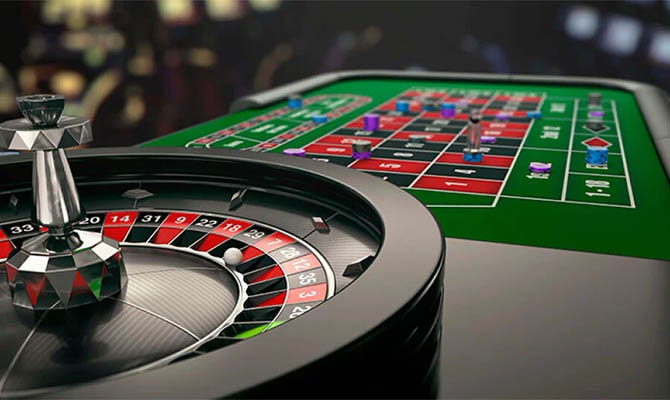
Within a dynamic and stimulating world of casinos, where luck and strategy intertwine, hues and aesthetic play a critical role in attracting gamblers. As soon as players step into a casino or access a gaming website, they are enveloped in a visual feast that captures their attention and lures them to explore more. Vivid colors, engaging graphics, and innovative layouts are meticulously crafted to create an environment of excitement and anticipation, ultimately improving the gaming encounter.
As gamblers move through the dynamic landscape of casino games, they come across a range of designs that not only serve aesthetic purposes but also influence feelings and decision-making. Colors like scarlet and yellow symbolize wealth and fortune, while soothing blues and emeralds can create a much tranquil environment. Understanding how these elements function together enables casinos to create an inviting and energizing atmosphere that encourages players to interact with the games, invest more time at the tables, and increase their overall enjoyment.
The Science of Color in Gambling Games
Hue plays a critical role in the development of casino games, shaping players’ feelings and behaviors. Lively and bold hues, such as crimson and yellow, are often used to ignite enthusiasm and attract notice. These colors create a feeling immediacy and vitality, encouraging players to participate more eagerly with the experience. By strategically selecting tints, designers aim to elicit emotions of satisfaction and anticipation, which can enhance the total player experience.
Various shades also have psychological connotations that can impact how participants perceive their chances of victory. For instance, green is often associated with fortune and prosperity, making it a frequent choice in activities like the roulette wheel and poker tables. This association can lead gamblers to feel more hopeful and assured in their play, ultimately motivating them to wager more. Understanding these associations allows game developers to design environments that enhance player enjoyment and loyalty.
In addition, the interface of gaming interfaces often employs blended colors and contrasting colors to direct players’ responses. For instance, winning combinations may be highlighted with vivid, contrasting shades, creating a visual cue. This method strengthens successful results and promotes repeated engagement. By utilizing color psychology, gaming venues can create activities that not only captivate gamblers but also maintain them involved and committed in their game experience.
Creative Elements that Attract Players
The aesthetic appeal of gambling games is largely influenced by the use of vibrant colors. Bright and contrasting colors are strategically chosen to create an appealing atmosphere that captures attention. For instance, crimson and golds often signify good fortune and prosperity, which is why they are common in the color schemes of gaming machines and game surfaces. casino en ligne fiable These colors not only attract players in, but they also stir emotions associated with thrill and anticipation, enhancing the total gaming experience.
In addition to color, the aesthetic and layout of casino games play a significant role in captivating players. Games are designed to be intuitive, ensuring that players can quickly understand the rules and gameplay. User-friendly interfaces, along with engaging graphics and motion, help maintain gamer interest and promote extended play sessions. The physical elements, such as the texture of the buttons and the sounds of the games, also contribute to a comprehensive sensory experience that keeps players engaged.
Finally, thematic elements in gaming design can significantly influence gaming decisions. Many casino games are inspired by media, myths, or adventure themes, incorporating symbols and characters that connect with players. These themes create a sense of engagement and connection, making each game feel distinct. When players feel a bond to the theme, they are more likely to choose that game over others, leading to increased participation and enthusiasm within the casino environment.
Case Studies: Successful Gambling Slot Designs
One prime example of impressive casino game design is the popular slot machine series based around popular movies. Games such as those based on the The Wizard of Oz and Game of Thrones utilize vibrant colors and high-quality graphics to immerse players in familiar narratives. The employment of dynamic visuals and engaging sound effects grabs the focus of players, creating an psychological connection to the theme. This approach not only promotes longer play but also enhances the overall gaming experience, yielding increased player retention.
Another effective case is the application of color in table games like 21 and roulette. Casinos often develop these games with dark reds and greens, colors traditionally linked with luck and wealth. For instance, the emerald felt on a 21 table provides a relaxing effect, while the red accents in roulette invite excitement. This thoughtful use of color helps to foster an inviting atmosphere that encourages players to participate, fulfilling their psychological impulses and boosting their enjoyment.
Finally, social casino games that feature social features and vivid, colorful designs have achieved remarkable success in engaging players. Games like Zynga’s Poker and Slotomania leverage vivid colors and playful animations to establish an inviting online environment. The addition of leaderboards, social sharing options, and in-game rewards promotes competition and community, pulling players in for longer sessions. Such designs not just make the games visually enticing but also highlight social connectivity, a key factor in player retention and engagement within online casino environments.